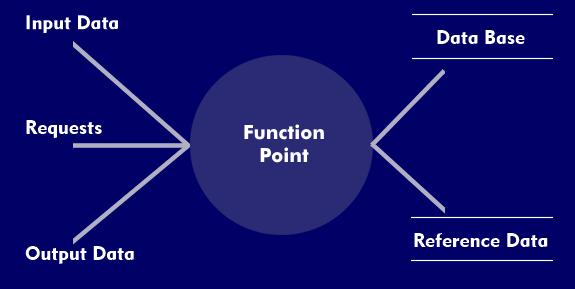function point method
The function point method or function point analysis (FPA) is a method of software metrics and already maps the properties of a software as a measure on the basis of its specification. Thus the early estimation of the development expenditure for a software product is possible. A central beginning thereby is the consideration of most diverse points of view. Thus the security of investment decisions is possible in connection with the development of software. The origins of the function point method go back into the late 70's and are based on research of the company IBM.
The "International Function Point Users Group" (IFPUG), founded in 1986, pursues the standardization and further development of the function point method. IFPUG publishes the generally accepted set of rules "Function Point Counting Practices Manual", which was introduced in version 4.0 in 1994. The use of the method in early phases of the software development as well as the integration of a graphic user interface were considered.
Classification of the Function Point method
The function point method arranges itself into the group of the weighting methods, whose basis it is to define different factors, which flow into the evaluation. These can be of subjective nature, like the qualification of the personnel, or of objective origin, like with regard to the evaluation of the programming language used. These influencing factors are linked mathematically, so that ultimately an overall effort can be determined.
First in three stages the so-called unvalued (also: unadjusted) Function Points( FP) are determined. In the first stage, the following application parameters are taken into account for their calculation: Number of user inputs, number of user outputs, number of user queries, number of functions or databases and number of interfaces to other applications or to other systems.
The function points determined in this way are weighted in the second stage by complexity parameters of the application and in the subsequent third stage by empirical constants of the development process. The determined values are transferred to a calculation form. In the following phase, influencing factors are determined that can increase or decrease the determined - still unweighted - Function Points with a percentage factor. For this purpose, IFPUG specifies the consideration of up to 14 different characteristics ranging from elementary processing logic to reusability. At the end of this phase, we speak of evaluated (also: adjusted) function points. In order to get now finally a statement about the development expenditure for a software project, the thus determined evaluated Function Points are compared with the productivity of software development processes in coworker months. These values are usually tabulated and result from generally available productivity data as well as from specific empirical values by past development processes.
However, productivity measures based on Function Points have also drawn criticism, for example:
- Estimating the Function Points of an application, while correlated with the number of instructions produced, does not take into account the algorithmic complexity of the solution.
- In the calculation of Function Points, application parameters and weighting factors are used, which are determined by subjective assessment and evaluations (for example: Are the inputs, outputs, databases, and queries complex?)
Further alternative procedures of the expenditure and cost estimation technique, with which the quality characteristics cost loyalty and date loyalty can be better planned and realized with software developments, are the methodsCOCOMO (Constructive Cost Model) and Delphi.

